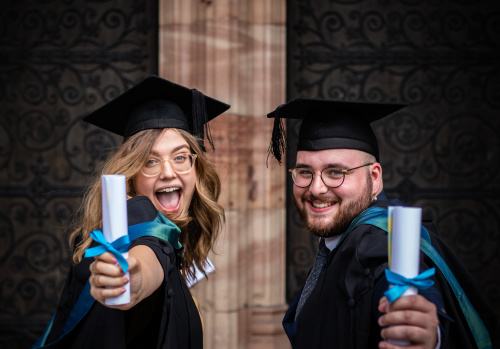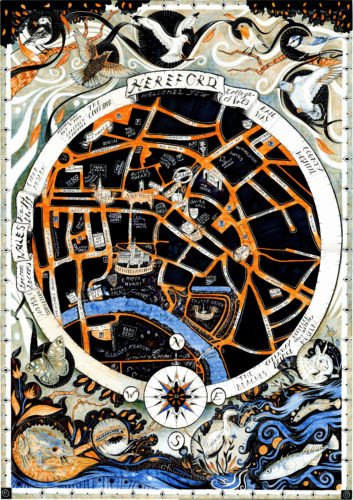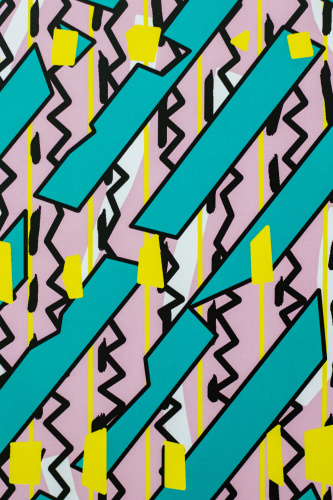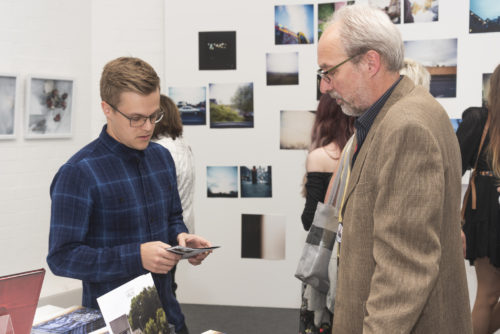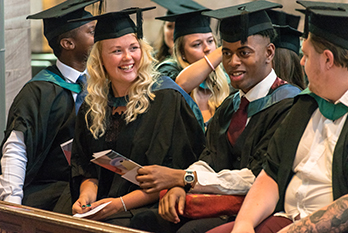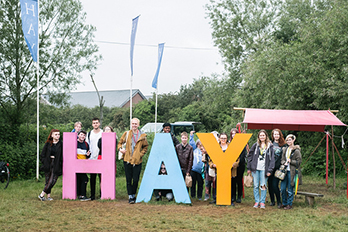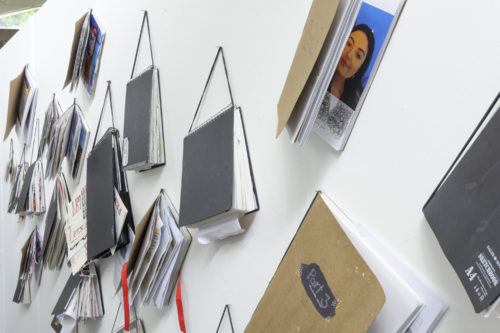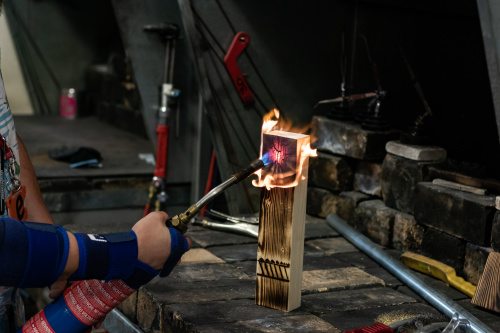Dissertation conference 2016
Published on 29.06.16
What does student scholarship look like within the traditional academic model? The annual dissertation conference is Hereford College of Art’s annual opportunity to recognise the scholarly activities and outstanding academic achievements of students but also to support students about to embark on the transformative learning experience that is Level 6 study. This is
Categories
What does student scholarship look like within the traditional academic model?
The annual dissertation conference is Hereford College of Art’s annual opportunity to recognise the scholarly activities and outstanding academic achievements of students but also to support students about to embark on the transformative learning experience that is Level 6 study.
This is a journey, as learners progress from the more ‘taught’ practice-in-context curriculum at L5 towards the independent learning experience which is the dissertation. Working within the arts environment adds a further dimension for students, who have to balance academic rigour and accordance with conventions with independent research and a link to their practice. This link is crucial; there are no clear ways to represent the relationship between engagement with the dissertation and producing outstanding practical work at the show. However, somehow the two are deeply interrelated in a dynamic balance which deepens practical work (perhaps through supporting a meta-awareness of how where the work sits in context to a range of external frameworks).
Practice in Context (PIC) is a research-based curriculum. Students are given texts at L5, which address issues of ‘meaning’, and ‘value’ specific to their curriculum areas and then are encouraged to develop and expand on these at L6 through developing a dissertation question and ‘research trails’ to explore over the summer.
Understandably, many L5 students are nervous about undertaking such a long project – especially one which ‘they’ lead (although with support from their advisor). The conference, therefore, does not only present a model of the different ways excellent dissertations can ‘look’ and ‘feel’ but also a chance to ask questions – and for L6 students to share their process.
This year, our lovely friend and colleague Holland Otik was kind enough to take notes through the day using ‘twitter’ as a live stream. You can view her notes using the hashtag #hcadiss16 to get a sense of the breadth and depth of the day.
Textile student Elaine Moore’s discussion of ‘fashioning identity’ considered how we read the image and how within the flexible and constantly shifting social structures of the 21st century we can choose how we are perceived – and be manipulated by the industry. Winner of the Contextual Studies award, Elaine’s subtle arguments discussed how ideas can become ‘normalised’ in a world of digital social media but how they are also underpinned by a ‘self-sustaining set of rules’ and ‘expression is not as fluid as we might believe’.
Gabrielle Chaille (Artist Blacksmith) presented a dissertation rooted in the idea of participation, communities of practice and art as a vehicle for active social change. Including ideas from theorists such as Paulo Freire, who argues that education must support a community to be active in their change, he discussed socially engaged art and the idea of the artist as a facilitator, working with a community rather than expressing only their thoughts. I am unashamedly interested in this, and it was great to see a less traditional approach to art presented in a traditional academic forum.
Creative Design Crafts student Hannah Duncan discussed ideas of jewellery, considering whether jewellery has to be wearable, and considering the links we make between display and percieved function and Jacqui Morris talked eloquently about ideas of the folk tale, bringing Marxist critic Gramsci’s work into a wider argument regarding society and arguing that the folk tale is the ‘hidden transcript of the oppressed’.
Highlights of the afternoon included Stephanie Mortimore discussing how her dissertation let her strip back her work to ideas of ‘the idea of the image as delayed light projected’ and included her ethical considerations of creating narratives from old photographs as she twists the idea of memento mori into a different dimension, considering “the disconnected family album, found in an unexpected context, waiting for anchorage”.
A very different kind of photograph had been discussed earlier by Mark Rothberg, who discussed the surrealist imagery of Jerry Uelsmann, inspired by Uelsmann’s writing on the relationship between creativity, innovation and ways of understanding the world. Mark reflected on the context of Uelsmann as well as wider ideas about the nature of photography, culminating with a discussion as to how the value of traditional photo montage might have shifted in the world of digital technologies.
His work was followed by Amanda Pugh’s discussion of the meanings found in images intended to children – how these can often be seen to arise from the immediate context of the image and include much narrative – some understandable by the intended audience (children) but others more adult. The complexity of how children decode images is apparent through her illustrative practice, which considers an autistic child as the hero – here the visual communicator (the illustrator) acts as a translator to make the world of her hero visible to an audience. Amanda’s strong link between her practice and her dissertation was a strong theme of the day.
Echoing how theory and practice work together was Maggie Smith, whose dissertation work on the ‘branding of the British army’ took in ideas of the creation of a corporate family, signs inherent in traditional regalia and the myth of the army – how this is ‘about the signs we are shown and how we read them – we forget the reality of the product sold’.
As a showcase of excellent work the day worked superbly – early anecdotal feedback suggests that it was useful to L5 students both in understanding the dissertation process and in seeing what a dissertation might ‘look like’. Sometimes ‘showing’ is far more useful than ‘telling’. However, I believe the day also contributed to another discussion, perhaps one with further questions regarding the links between theory and practice, as suggested by this thinkpiece written by Jonathan Simmons for The Scholarship Project website.
My closing thoughts, alongside those of celebrating the amazing academic achievements of our students, would be to consider how that link between theory and practice might be better explored if we could also view final major projects alongside the dissertation presentations – bridging that crucial link visually and conceptually and clarifying how outstanding academic practice is present in the very links between visual and written work.
